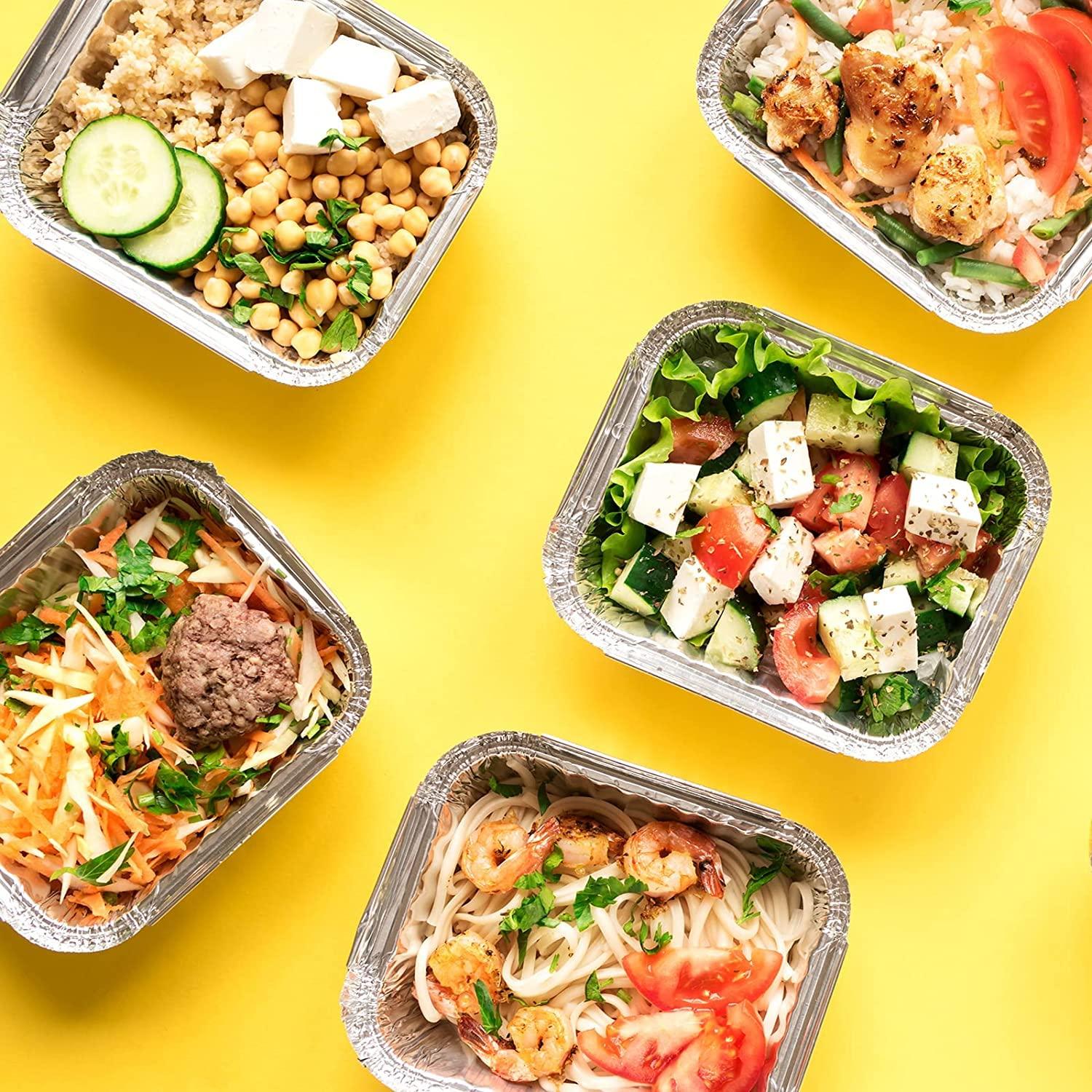When it comes to food storage, cooking, and serving, aluminum foil trays are a kitchen staple. They’re convenient, durable, and versatile, making them a go-to solution for everything from meal prep to party catering. But when faced with the choice between a full tray and a half tray, how do you decide which one is right for your needs? In this blog, we’ll break down the differences, benefits, and best uses for aluminum foil full trays and half trays to help you make an informed decision.
What Are Aluminum Foil Trays?
Aluminum foil trays are lightweight, disposable containers made from aluminum foil. They come in various sizes, shapes, and depths, but the most common distinction is between full trays and half trays. These trays are oven-safe, freezer-friendly, and often used for baking, storing, transporting, and serving food.
Aluminum Foil Full Tray
A full tray is the larger of the two options, typically measuring around 12 x 10 inches (or similar dimensions, depending on the brand). It’s deeper and has more capacity, making it ideal for larger quantities of food.
Benefits of Full Trays:
-
Ample Space: Perfect for cooking or serving large meals, such as casseroles, roasted meats, or big batches of baked goods.
-
Great for Crowds: Ideal for parties, potlucks, or family gatherings where you need to serve a lot of people.
-
Versatility: Can be used for baking, freezing, or transporting food without worrying about spills or leaks.
-
Durability: The sturdier construction of full trays makes them suitable for heavy or dense foods.
Best Uses for Full Trays:
-
Roasting a whole chicken or turkey.
-
Baking large casseroles or lasagnas.
-
Storing or transporting big portions of food.
-
Catering events or buffets.
Aluminum Foil Half Tray
A half tray is smaller, usually measuring around 9 x 6 inches, and is shallower than a full tray. It’s designed for smaller portions or individual servings.
Benefits of Half Trays:
-
Portion Control: Perfect for individual meals or smaller servings, making it great for meal prepping.
-
Space-Saving: Takes up less room in the oven, fridge, or freezer, which is ideal for smaller kitchens or limited storage.
-
Cost-Effective: Uses less material, so it’s often more affordable than full trays.
-
Convenience: Easy to handle and ideal for single-use purposes.
Best Uses for Half Trays:
-
Meal prepping individual portions.
-
Baking smaller dishes like brownies or side dishes.
-
Serving appetizers or desserts at parties.
-
Storing leftovers in the fridge or freezer.
Key Differences Between Full Trays and Half Trays
| Feature |
Full Tray |
Half Tray |
| Size |
Larger (e.g., 12 x 10 inches) |
Smaller (e.g., 9 x 6 inches) |
| Depth |
Deeper |
Shallower |
| Capacity |
Holds more food |
Holds less food |
| Best For |
Large meals, crowds, heavy dishes |
Individual portions, small batches |
| Storage |
Takes up more space |
Space-efficient |
How to Choose Between Full and Half Trays
The choice between a full tray and a half tray ultimately depends on your specific needs. Here are a few questions to ask yourself:
-
How much food are you preparing or serving? If you’re cooking for a crowd, go with a full tray. For smaller portions, a half tray is sufficient.
-
What’s the purpose? Are you baking, storing, or serving? Full trays are better for baking and catering, while half trays are great for meal prep and individual servings.
-
How much storage space do you have? If space is limited, half trays are more practical.
-
What’s your budget? Half trays are generally more affordable, but full trays offer better value for larger quantities.
Tips for Using Aluminum Foil Trays
-
Oven Safety: Both full and half trays are oven-safe, but always check the temperature limits on the packaging.
-
Freezing: These trays are perfect for freezing meals. Just cover them with aluminum foil or plastic wrap to prevent freezer burn.
-
Recycling: Aluminum foil trays are recyclable! Make sure to clean off any food residue before recycling.
-
Stacking: If you’re storing multiple trays, stack them carefully to avoid crushing or spilling.
Conclusion
Whether you choose an aluminum foil full tray or a half tray, both options offer convenience and versatility in the kitchen. Full trays are your best bet for large meals and catering, while half trays are perfect for individual servings and smaller dishes. By understanding the differences and considering your specific needs, you can make the most of these handy kitchen tools.
Next time you’re stocking up on aluminum foil trays, think about the size of your meals, the number of people you’re serving, and your storage space. With the right choice, you’ll streamline your cooking, serving, and storage processes—making life in the kitchen a little easier!









Share this page with your family and friends.